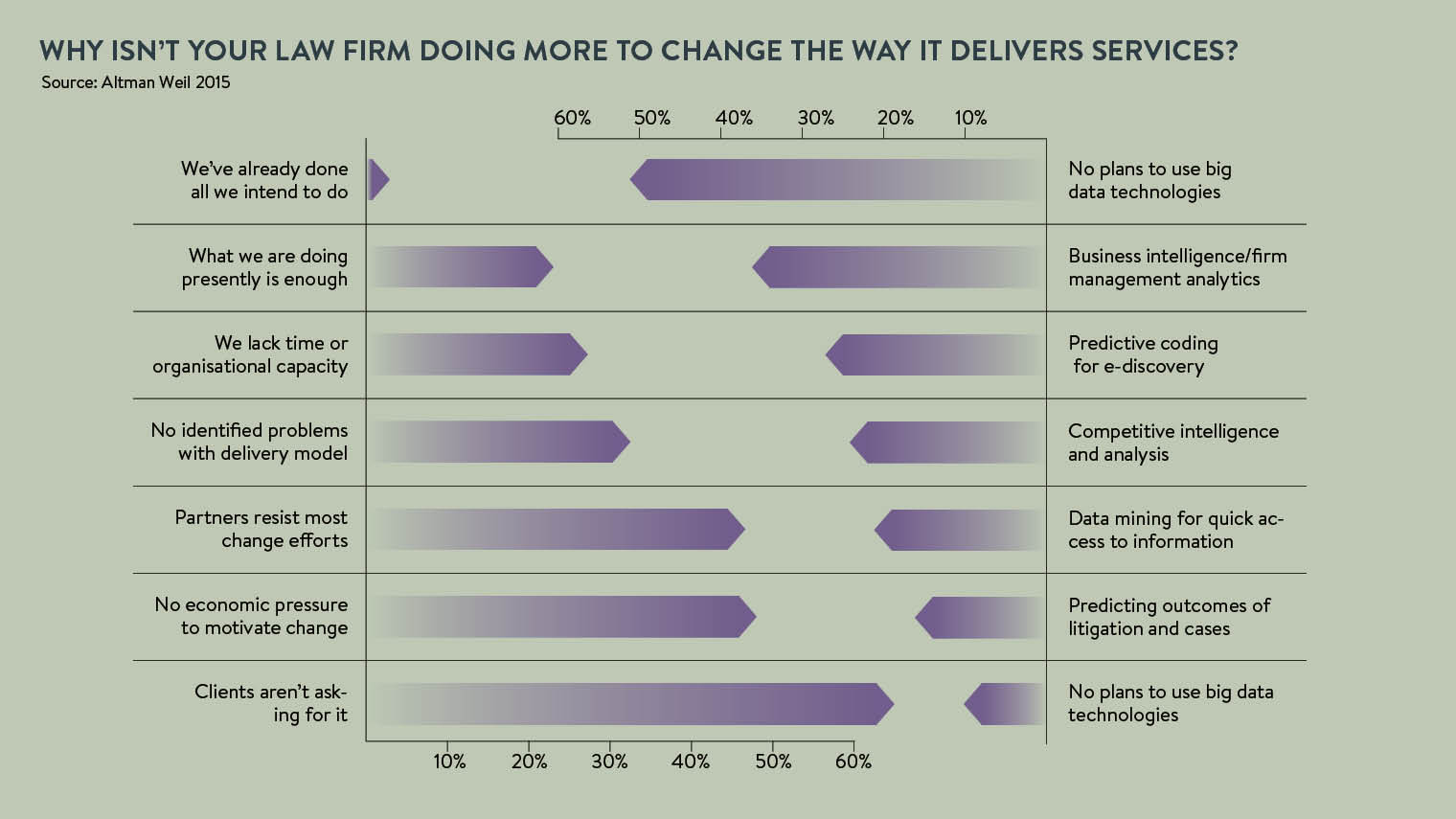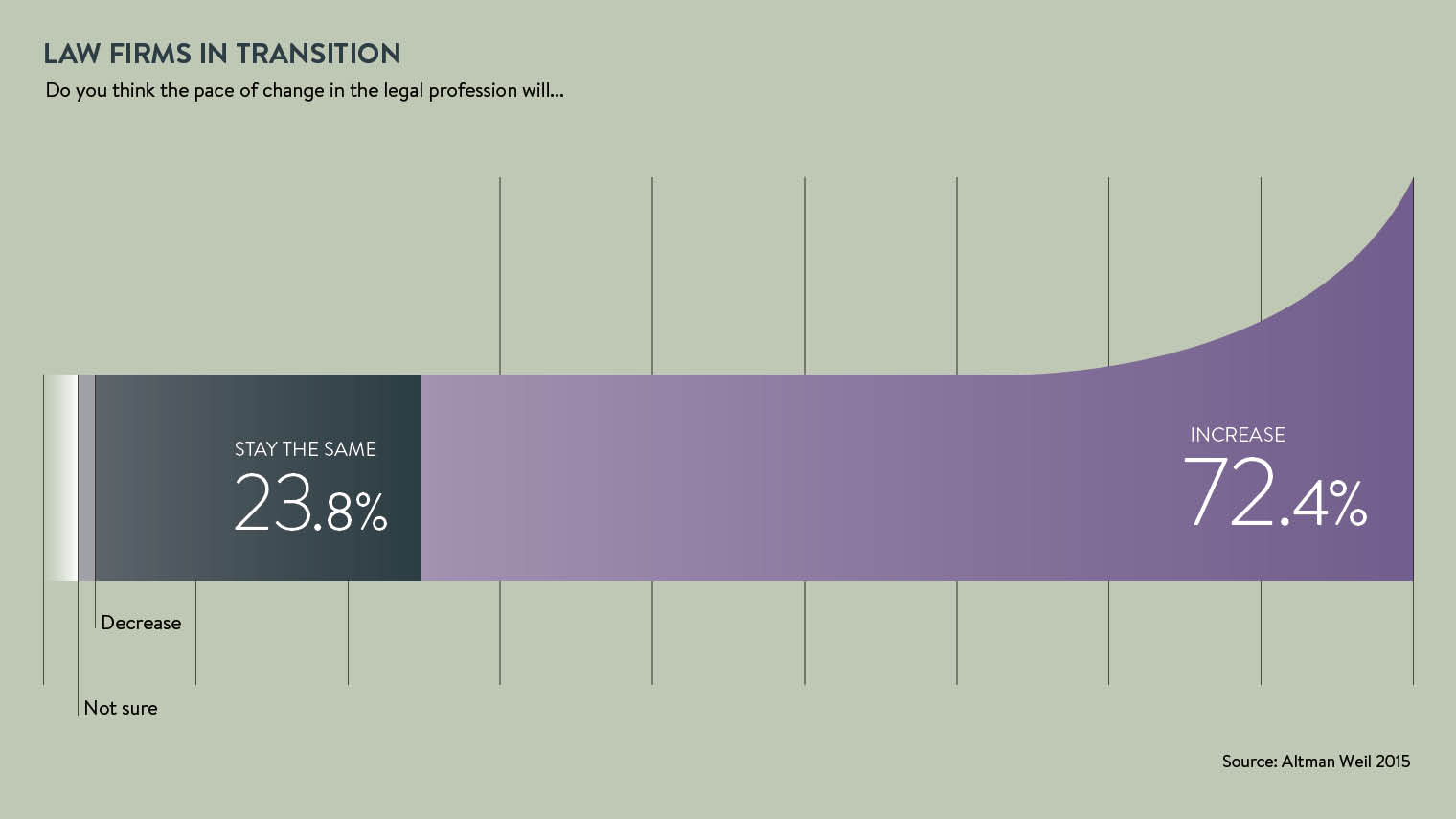Lawyers are good at law. It’s what they study, practise and love. But it’s not enough. To run a successful practice lawyers need to be great at marketing, management and financial planning as well as technology. Here is where the profession struggles.
So what are the best ways law firms can rethink how they run their operation? Surely even the slickest outfit could find something new to implement.
Click here for the full infographic
Apps for client management
Mobile apps are becoming mainstream for time-logging and communications. But how about a client app? A new product called The Link App aims to change the way lawyers communicate with clients.
Designed by Lauren Riley, a solicitor who had a moment of fame appearing on TV’s The Apprentice, the app gives clients a quick way to show progress made on a case. Notifications appear when a case is updated. If a client wants to talk to a lawyer, they enter a request via the app.
The concept is designed to minimise annoying e-mails and phone calls out of the blue for both parties. The Link App is focused on basic consumer services, such as property, wills and family law. IWC Probate Services has signed up, stating that customers do indeed appreciate the app.

For internal case management there is a huge variety of tools on offer. Wright Hassall emphatically recommends Visualfiles produced by LexisNexis. Martyn Wells, IT director at Wright Hassall, explains: “It works like this. Every business process has a number of stages and each stage can be represented by a milestone.
“Through the management reporting functionality within Visualfiles, the system is able to offer clear visibility of the exact stage of every matter by milestone and, therefore, the billing value commensurate for every single piece of work at that point in time.”
The benefits? Mr Wells continues: “Monthly billing estimates then become a ‘matter of fact’ rather than ‘finger-in-the-air estimates’ and the practice leaders of departments have good insight into the pinchpoints in the departmental throughput. This approach is also a great aid to ensuring clients are invoiced in a timely manner and that they pay their bills on time.”
Another snazzy bit of technology is making document-signing easier. Linklaters has adopted DocuSign to speed up the process. The technology means lawyers and clients no longer need to stay late in offices for a signing ceremony on paper. Instead, participants use a mobile, laptop or tablet to authenticate documents.
Mark Nuttall, a finance partner at Linklaters in London, says: “Completing a signing in the traditional way can be a lengthy process, whereas through mobile technology, with the click of a mouse or the tap of a tablet or smartphone, it can be reduced to minutes, while maintaining the formality and security of signing.
“We hit upon the idea of observing how electronic signatures are commonly used for thousands of transactions in the rental market. It was clearly applicable to our work and our business services team quickly turned the idea into a reality.”
Other electronic signature apps exist. For example, Brabners, based in north-west England, favours E-Sign, which uses QR codes rather than handwritten signatures.
[embed_related]
Lawyers or managers?
Management is one of the big debates in law. Do firms want lawyers or managers?
Intellectual property specialist Wynne-Jones IP has remodelled itself on a managerial structure.
Jayne Nation, Wynne-Jones’ business director, says most law firms hire project managers and marketing directors, but fail to give them authority to make decisions.
“At Wynne-Jones IP there are two non-technical directors, both employees, who sit on the board and have authority for operations, HR, marketing, business development and customer care. This frees up the fee earners to do strategically focused business development for the firm and fee-earning. This is one of the main reasons that Wynne-Jones IP has seen double-digit growth in recent years.”
Professionals brought in from other industries often approach situations in a different way and can offer knowledge to help grow a firm
The extreme version of this is an alternative business structure (ABS). Introduced in 2007, the ABS allows non-lawyers to invest in and run law firms. Traditional firms will find much to learn from the operation of these innovative practices.

For example, Fletchers Solicitors gained approval as an ABS in 2015, with Nigel Savage, the former chief executive of the University of Law, as a director. Chief executive Ed Fletcher says: “Bringing in the expertise of an ‘outsider’ helps to increase diversity and gives a real boost to the collective intelligence of the company.
“Professionals brought in from other industries often approach situations in a different way and can offer knowledge to help grow a firm that is beyond the training or skillsets of a lawyer. For example, they could provide expert assistance with strategic direction and growth or give skilled insight into areas such as marketing to increase brand awareness.” Flexible working, in particular, is a forte at Fletchers. So much so the firm is one of the few law firms on The Sunday Times 100 Best Companies to Work For list.
Alternative business models
Without a traditional equity partnership approach new thinking can be brought to issues such as profit-sharing. Signature Litigation is a new firm created with a company-wide profit share in mind. Founder Graham Huntley says: “The traditional partnership reserves all of the upside in good years for the owners of the firm, the partners. The Signature model is better because it starts from the proposition that everybody has a direct financial interest in making every year ‘good’. This generates high levels of productivity in the right way.”
A profit-sharing model may also induce non-legal specialists to stay with a firm. When artificial intelligence algorithms dominate case management what model will attract top talent from Silicon Valley? Equity partnerships will need to reflect on that question.
Marketing offers light relief from the rigours of the law, especially public relations. Lawyers often enjoy giving their opinion on issues of the day, for legal journals or newspaper supplements in The Times. And yet many firms are pretty terrible at PR, says Melissa Davis, former head of media at the Law Society and now managing director of MD Communications.

The problem? She identifies two major flaws. “Lawyers will spend time honing the perfect statement, only to find that the story has moved on and a quicker competitor was quoted,” she says. “Lawyers can also be held back by an unwillingness to express a clear opinion on one side of an argument, like the famous two-handed economist.” Speed and clarity can give partners the edge when seeking press coverage.
And a final word for law firms hoping to change the way they work. It takes time and effort. Just look at Farrer & Co, which after more than 300 years of paper-based work opted to shift to a digital document management system known as eFile.
The transition was like a military operation. Neil Davison, Farrer’s director of IT, says: “We put a project team together of 11 people that included partners, solicitors and secretaries, who undertook a comprehensive review of document management and ultimately choosing the technology they thought was the right fit for the firm – and that was NetDocuments.”
The project took nine months to complete, with a four-month change-management programme kicking in after four months. Around 400 staff were given training at formal workshops, backed up by intensive sessions on the floor.
The results mean Farrer’s staff can access documents from any device in any location. Paper usage has plummeted. Security is up and productivity has risen too.
Making changes to the way a firm is run won’t be easy. But when the rewards are so great and the penalties for falling behind so severe, it’s worth taking the plunge.
Apps for client management

Lawyers or managers?





